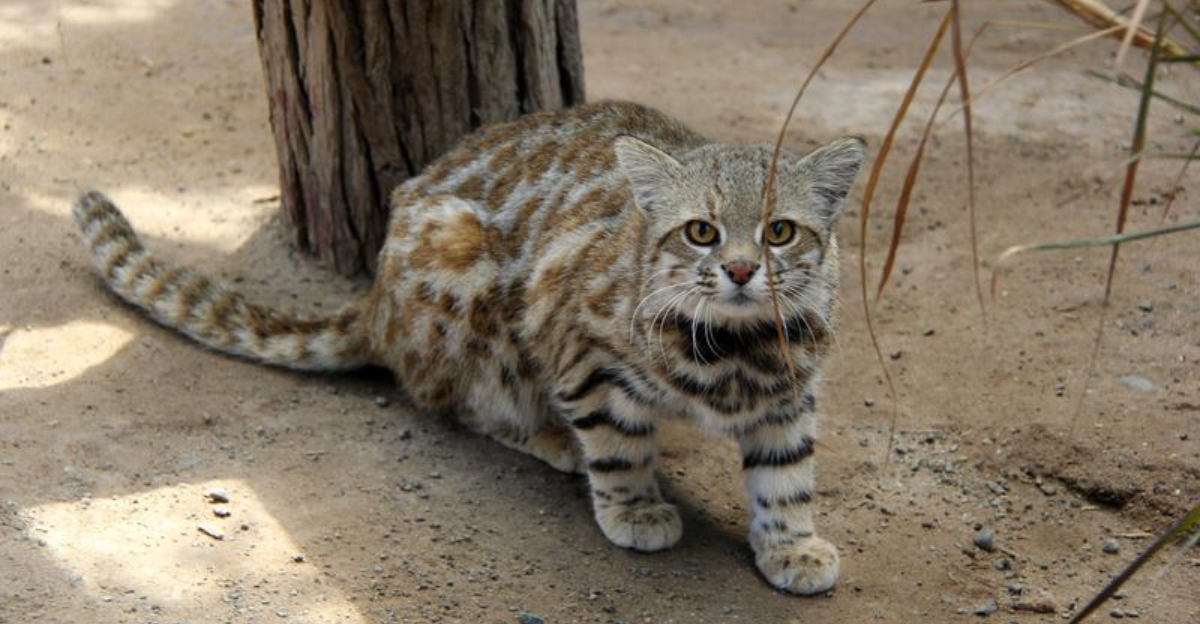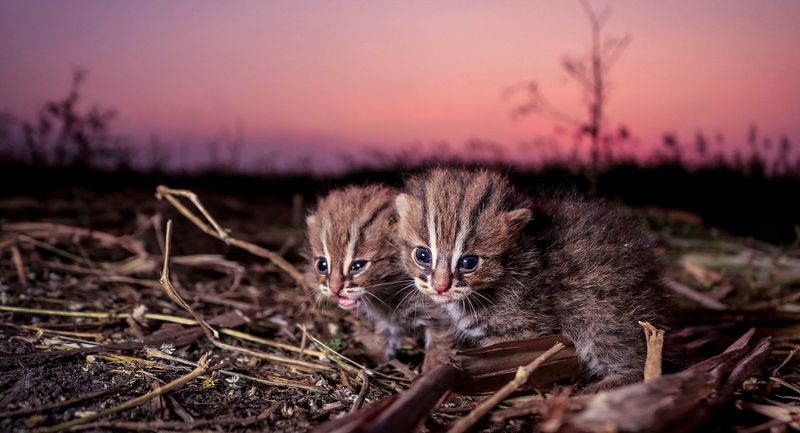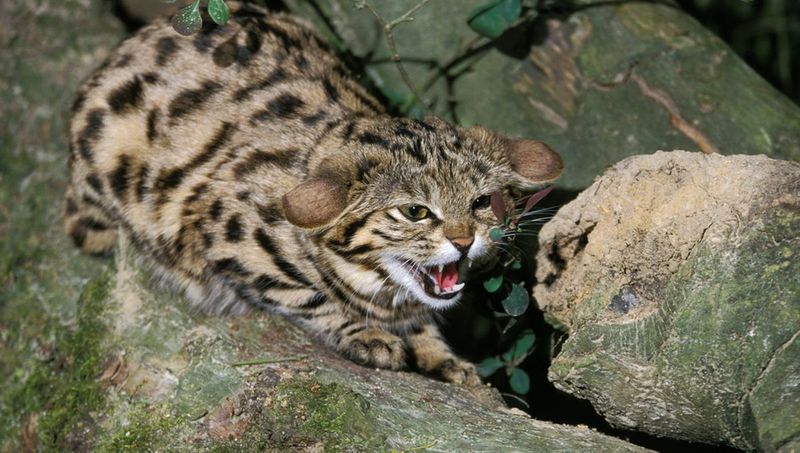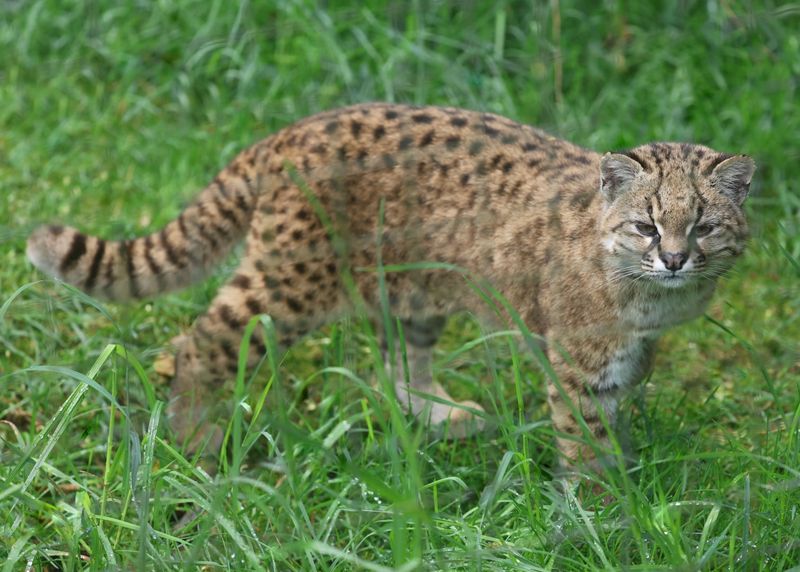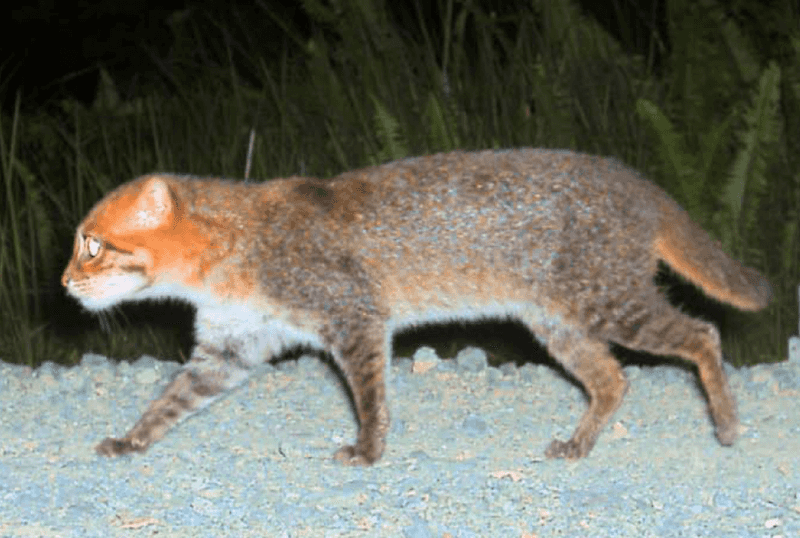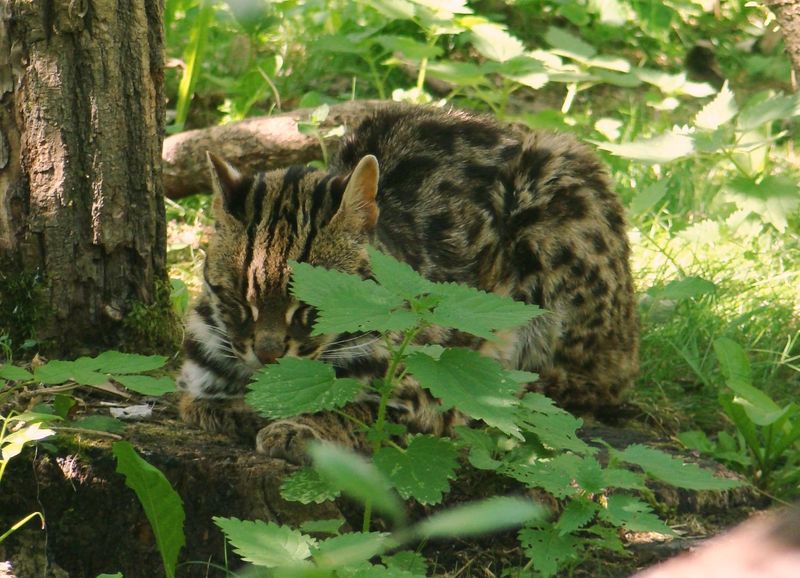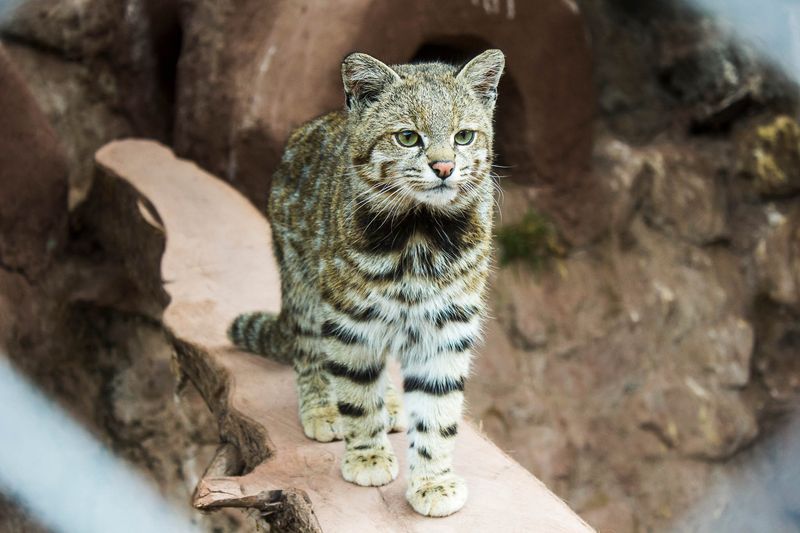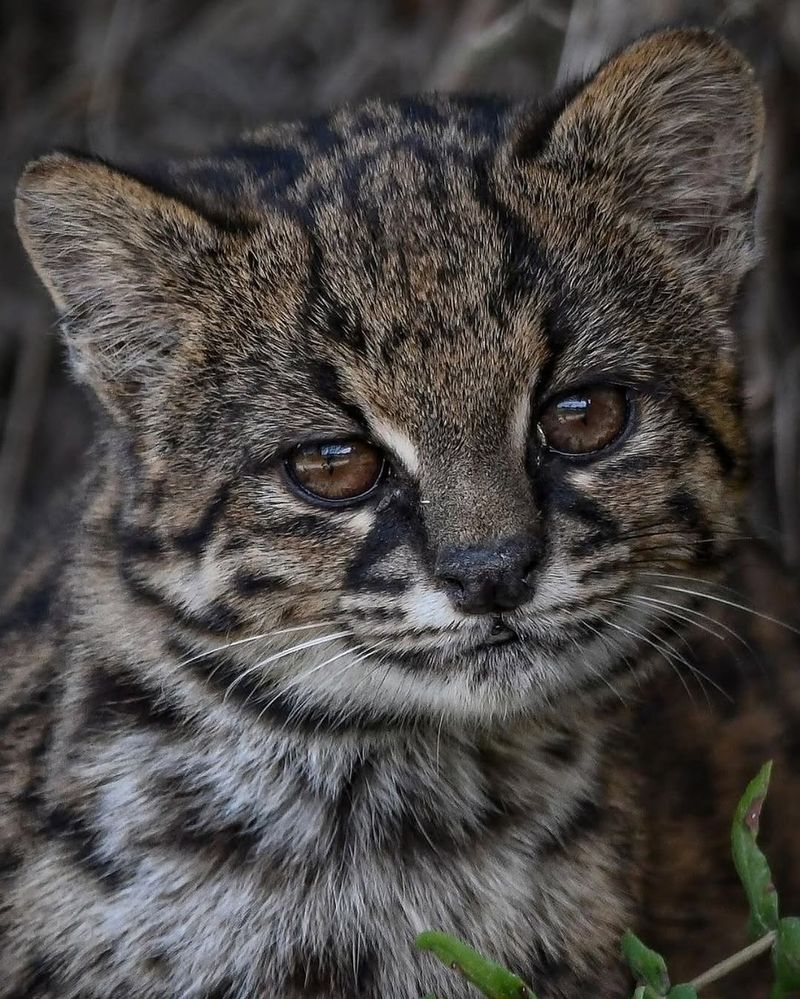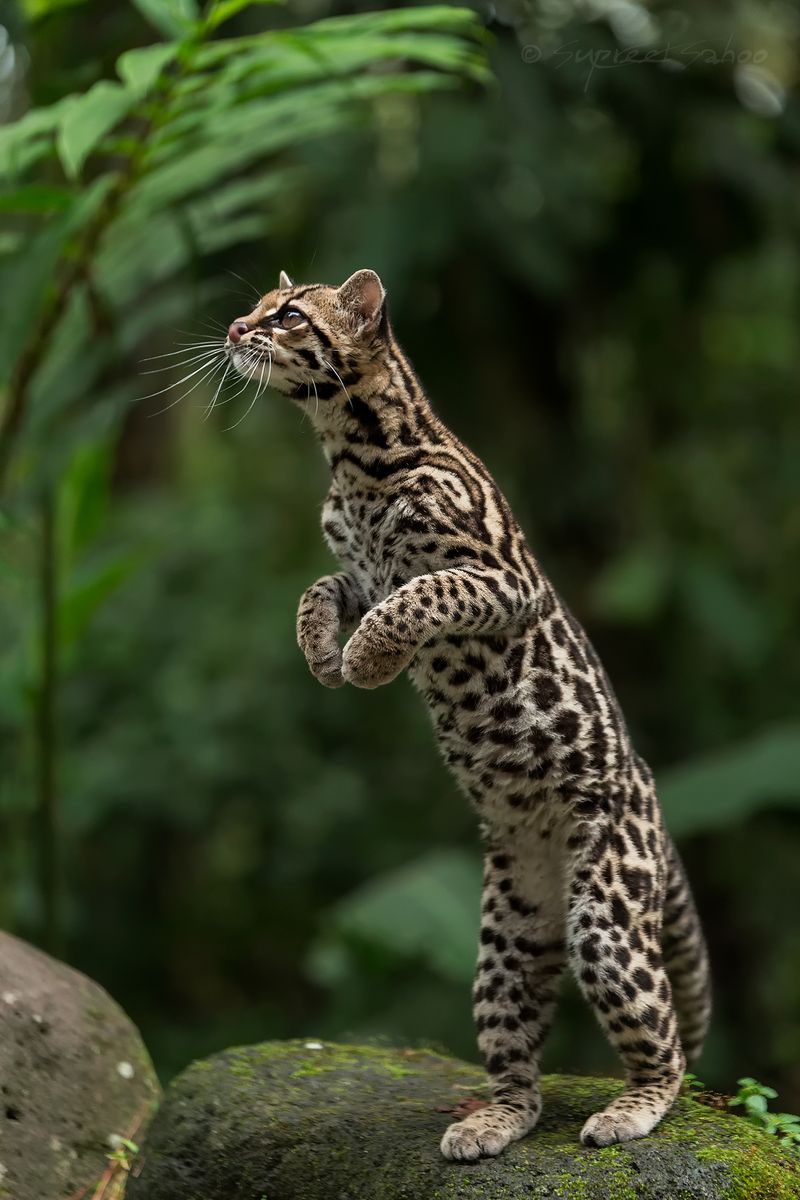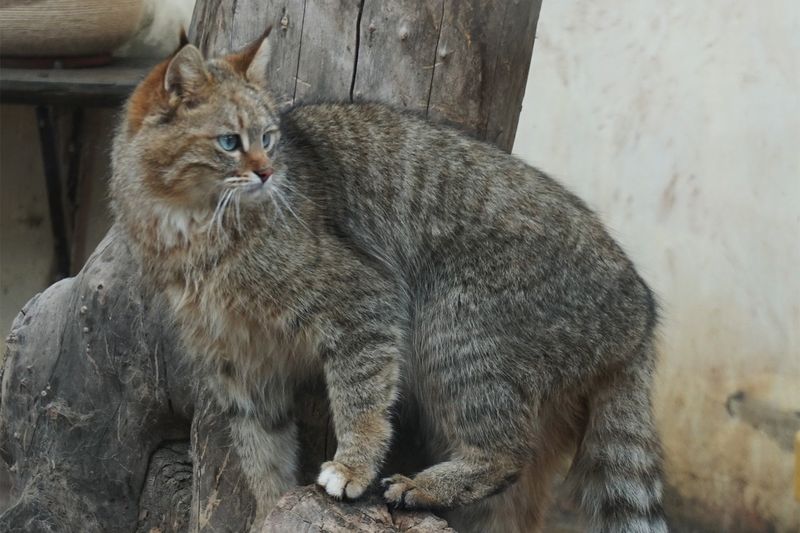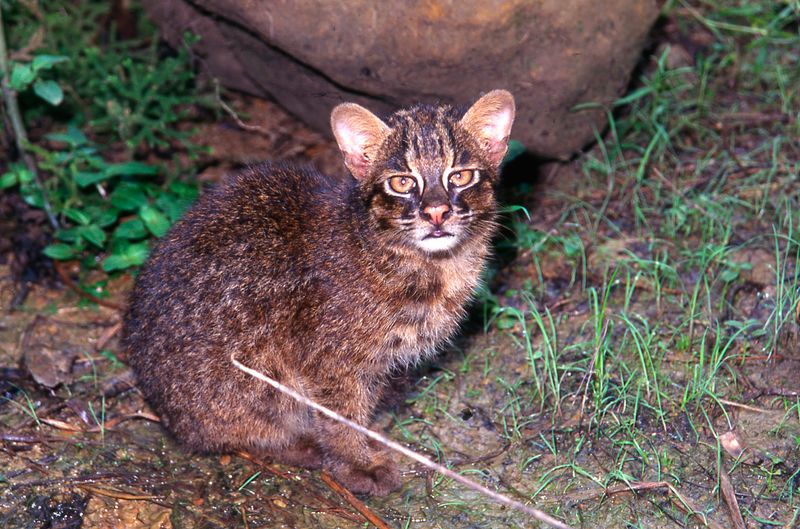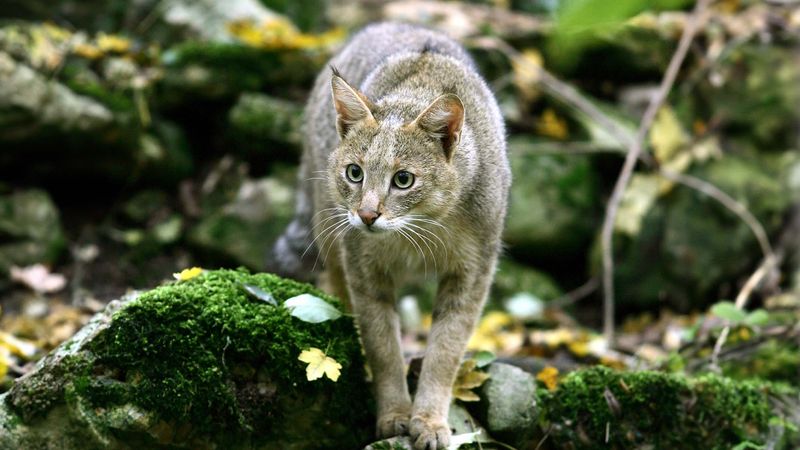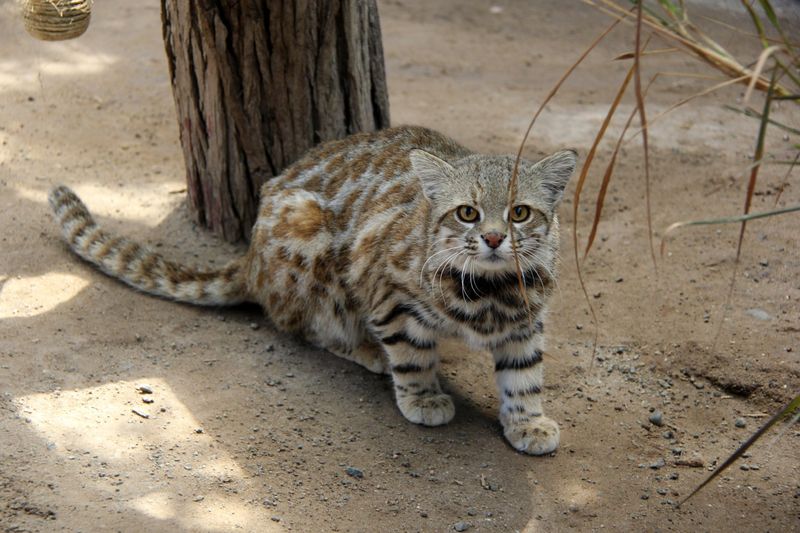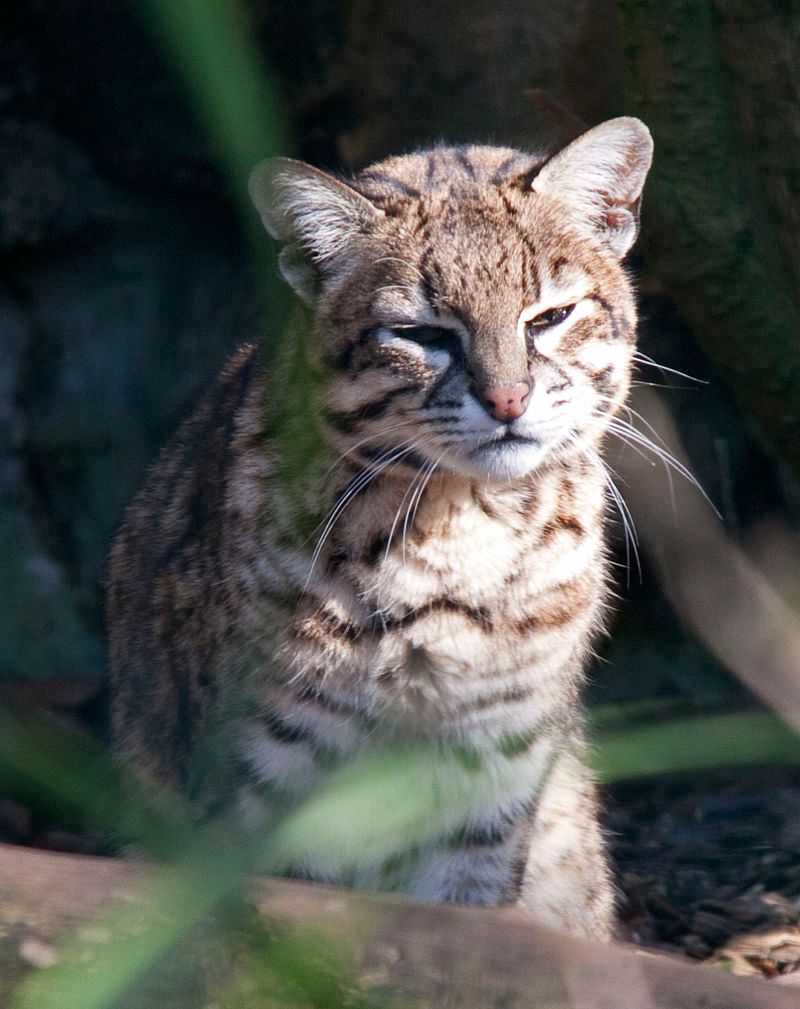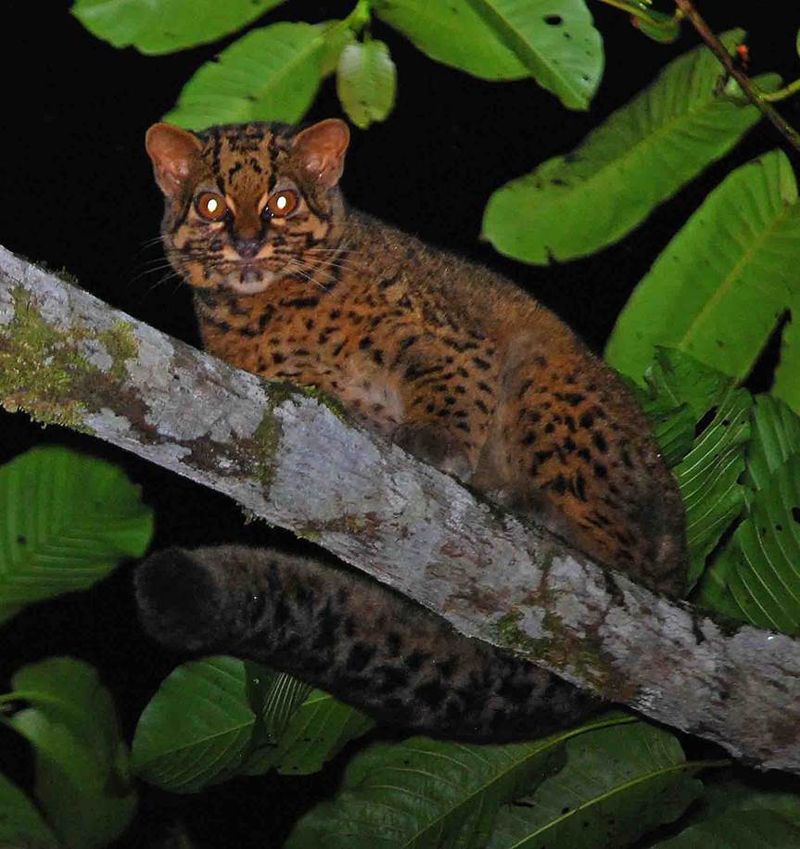📖 Table of Content:
- 1. Rusty-Spotted Cat (Prionailurus rubiginosus)
- 2. Black-Footed Cat (Felis nigripes)
- 3. Kodkod (Leopardus guigna)
- 4. Flat-Headed Cat (Prionailurus planiceps)
- 5. Pallas’s Cat (Otocolobus manul)
- 6. Sunda Leopard Cat (Leopardus javanensis)
- 7. Andean Mountain Cat (Leopardus jacobita)
- 8. Guigna (Leopardus guigna)
- 9. Margay (Leopardus wiedii)
- 10. Chinese Mountain Cat (Felis bieti)
- 11. Iriomote Cat (Prionailurus bengalensis iriomotensis)
- 12. Jungle Cat (Felis chaus)
- 13. Pampas Cat (Leopardus colocola)
- 14. Geoffroy’s Cat (Leopardus geoffroyi)
- 15. Marbled Cat (Pardofelis marmorata)
Explore the captivating world of the smallest wild cats, often overshadowed by their larger relatives but no less extraordinary. These tiny felines possess unique traits that make them exceptional hunters, climbers, and survivors in their natural habitats. Despite their size, they play a crucial role in maintaining ecological balance across various environments.
Each of these wild cats has evolved remarkable adaptations to thrive in their surroundings. Some, like the Margay, are expert climbers capable of navigating dense rainforests with ease, while others, like the Pallas’s cat, have thick fur to endure freezing mountain climates. Their diverse skills and resilience allow them to survive in some of the most challenging conditions on Earth.
From the remote highlands of the Andes to the lush jungles of Southeast Asia, these elusive felines have carved out niches where they flourish. Their secretive nature makes them difficult to study, adding to their mysterious allure. Learning about these fascinating species helps us appreciate their role in the wild and the importance of conservation efforts to protect them.
1. Rusty-Spotted Cat (Prionailurus rubiginosus)
The Rusty-Spotted Cat, native to India and Sri Lanka, is the smallest wild cat, weighing between 2 to 3.5 pounds. This tiny feline is often called the ‘hummingbird of the cat world’ due to its small size and quick movements. Despite its petite stature, it is a skilled hunter, primarily feeding on rodents and birds. Its nocturnal nature and elusive behavior make it rarely seen in the wild. Adapted to various habitats, from dry forests to grasslands, this cat showcases incredible agility and adaptability, despite its diminutive size.
2. Black-Footed Cat (Felis nigripes)
Native to Southern Africa, it weighs between 2 to 5 pounds, making it one of the smallest wild cats. Its small size belies its fierce nature; it can take down prey much larger than itself. This cat primarily hunts small mammals and birds and is adept at surviving in arid environments. Its elusive behavior and nocturnal lifestyle make it a rare sight, adding to its mysterious allure.
3. Kodkod (Leopardus guigna)
The smallest wild cat in the Americas, weighing between 4.5 to 6.5 pounds, is an excellent climber. They are often found in dense, temperate rainforests. Their nocturnal and solitary nature makes it difficult to study, but their agility and adaptability are well-documented. The Kodkod primarily preys on small mammals and birds, using its climbing skills to navigate its forest habitat. Despite its small size, it plays a crucial role in maintaining the balance of its ecosystem.
4. Flat-Headed Cat (Prionailurus planiceps)
Weighing between 3.5 to 5.5 pounds, it is superbly adapted to aquatic environments. This cat is an adept swimmer and hunter, primarily feeding on fish and frogs. Its semi-aquatic lifestyle sets it apart from most other felines. Despite its rarity, it has been observed using its specialized hunting techniques in rivers and streams, making it a fascinating subject for researchers.
5. Pallas’s Cat (Otocolobus manul)
Known for its thick, fluffy coat and grumpy expression. Weighing between 6 to 10 pounds, it is well-adapted to cold, mountainous regions. Its dense fur insulates it against harsh temperatures, allowing it to survive in some of the most extreme environments. This solitary and elusive cat primarily hunts small mammals like pika. Despite its somewhat comical appearance, the Pallas’s Cat is a skilled predator, using its camouflage to remain undetected by both prey and predators.
6. Sunda Leopard Cat (Leopardus javanensis)
Weighing between 4 to 8 pounds, it was previously considered a subspecies of the leopard cat. This small feline is perfectly adapted to its rainforest habitat, where it hunts small mammals and birds. Its agile nature and climbing skills make it an efficient predator in dense forest environments. The Sunda Leopard Cat’s beautiful spotted coat provides excellent camouflage, allowing it to blend seamlessly into its surroundings as it prowls the jungle.
7. Andean Mountain Cat (Leopardus jacobita)
The Andean Mountain Cat is one of the rarest wild cats, with fewer than 2,500 individuals remaining. Native to the high-altitude Andes Mountains, this cat weighs between 8 to 12 pounds. Its thick fur and bushy tail provide insulation against cold temperatures, while its powerful limbs help it traverse rocky terrains. This elusive feline primarily preys on small mammals such as viscachas. Due to its remote habitat and scarcity, the Andean Mountain Cat is a rare sight, making it a highly sought-after species for wildlife enthusiasts and researchers.
8. Guigna (Leopardus guigna)
Also known as Kodkod, this feline is a small spotted cat native to Chile and Argentina. Weighing between 3.5 to 7 pounds, it is renowned for its incredible agility and leaping ability. They can jump high into the air to catch birds. Its elusive nature and nocturnal habits make it a challenging subject for researchers studying small wild cats. Despite its small size, the Guigna is a formidable hunter, playing a vital role in controlling prey populations in its ecosystem.
9. Margay (Leopardus wiedii)
The Margay is an exceptional climber, native to Central and South America, and weighs between 5 to 9 pounds. This feline can rotate its ankles 180°, allowing it to climb down trees headfirst like a squirrel. Its remarkable climbing ability enables it to hunt and escape predators in the dense forest canopy. The Margay primarily preys on small mammals, birds, and reptiles. Its nocturnal and solitary nature adds to the mystery of this beautiful cat, making it a fascinating subject for wildlife enthusiasts and researchers alike.
10. Chinese Mountain Cat (Felis bieti)
Weighing between 8 to 12 pounds, the Chinese Mountain Cat is adapted to cold, open grasslands where it hunts small mammals and birds. Its thick fur provides insulation against harsh temperatures. Due to its remote habitat and secretive nature, the Chinese Mountain Cat remains one of the least-studied wild cats, offering a unique challenge for researchers.
11. Iriomote Cat (Prionailurus bengalensis iriomotensis)
A critically endangered subspecies of the leopard cat is found only on Japan’s Iriomote Island. Weighing between 7 to 10 pounds, it is adapted to the subtropical forests and rivers of the island. This cat is a skilled swimmer and hunter, preying on small mammals, birds, and crustaceans. Its distinctive features and limited range make it a unique subject for conservation efforts. The Iriomote Cat’s critical status highlights the importance of habitat preservation and the challenges faced by island ecosystems.
12. Jungle Cat (Felis chaus)
The Jungle Cat, found in Asia and the Middle East, is uniquely adapted to aquatic environments, thriving near water sources. Weighing between 7 to 15 pounds, it is known to swim and hunt in wetlands. Unlike most small wild cats, the Jungle Cat has a varied diet that includes fish, frogs, birds, and small mammals. Its adaptability allows it to survive in diverse habitats, from forests to semi-arid regions. This cat’s ability to thrive in wetland areas makes it an interesting subject for those studying feline behavior and adaptation.
13. Pampas Cat (Leopardus colocola)
This breed remains a mystery due to its elusive nature. Weighing between 6 to 13 pounds, this cat inhabits a range of environments from grasslands to mountainous regions. Its fluffy coat provides camouflage and insulation, while its solitary lifestyle adds to its elusive reputation. The Pampas Cat’s diet mainly consists of rodents and birds. Despite being one of the more common small wild cats, its secretive behavior and varied habitats continue to intrigue researchers and conservationists.
14. Geoffroy’s Cat (Leopardus geoffroyi)
Geoffroy’s Cat, native to South America, can be found in forests, grasslands, and even wetlands. Weighing between 4 to 10 pounds, it is a highly adaptable hunter. This cat’s varied diet includes small mammals, birds, and insects, allowing it to thrive in diverse environments. Its adaptability and stealth make it a successful predator. Geoffroy’s Cat’s ability to survive in different habitats demonstrates the resilience and versatility of small wild cats, making it a fascinating species for study.
15. Marbled Cat (Pardofelis marmorata)
This cat is an excellent climber, often found in thick forests where it preys on birds and small mammals. Its distinctive fur pattern provides excellent camouflage. The Marbled Cat’s elusive nature and stunning appearance make it a highly sought-after subject for wildlife photographers and researchers, adding to its mystique.
